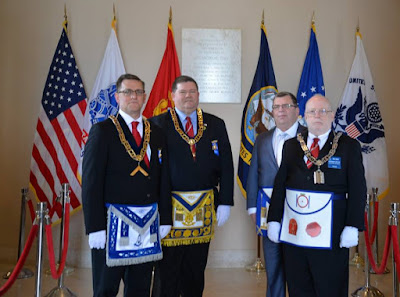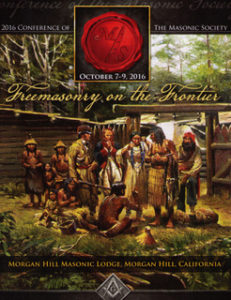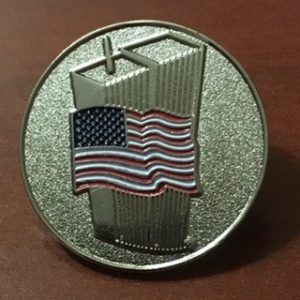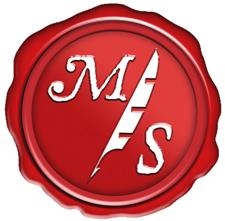Past, Present, Future
I grew up in the rural Midwest, in an apartment above the eight-page weekly newspaper our family ran. Across the alley from my bedroom window was the only three-story building around the town square, the brick Masonic building, with the town’s most popular café on the first floor. I wondered sometimes what happened on the second and third floors, behind the dark shades that got pulled down some evenings. But I guess I didn’t wonder enough to ask.
My maternal grandpa, in a nearby town, was a Mason. I remember that some evenings he would “go to lodge,” but he never talked about it. Apparently based on his membership, my mom was in Eastern Star, and my sister was a Rainbow girl, but I wasn’t interested enough to ask what all that was about either.
I stayed uninterested until my middle age.
For several years I had been part of an informal men’s support group, a group of men young and old, married and unmarried, gay and straight, who got together every week to share our inner and outer experiences of being male (in the words of a song from the musical Rent) “living in America, at the turn of the millennium.”
When the group broke up, I found that I missed their fellowship. And like many American men, I realized that I didn’t have many male friends outside of my workplace.
Along came the book The DaVinci Code, with its slight references to Freemasonry. Then along came the movie National Treasure, with its portrayal of Masons as keepers of an apparently long-lost, but actually long-held, treasure. Near the film’s end, when a close-up shot revealed that Harvey Keitel’s character, FBI Agent Peter Sadusky, was wearing a Masonic ring, I realized that I wanted, for the first time, to find out more about Freemasonry.
So I went on the Web and found my way to a lodge, and within a year, at the age of 60, I became a Master Mason. And indeed what I discovered was the male support and fellowship I had been missing.
But there was more. My doctoral dissertation had been on the teaching of mythology, a focus I had left behind professionally when I moved into the field of business communication, but one which had never stopped fascinating me. So it was a bonus for me that the fraternity I was joining had such a rich tradition of myth and ritual.
And it was an extra bonus to learn that Freemasons were indeed keepers of an apparently long-lost, but actually long-held, treasure, one much richer than the movie National Treasure could show.
As I explored the fraternity further, I found great pleasure in applying my knowledge and skills as an academic to a whole new world I felt passion for. And that led me to The Masonic Society.
Now, ten years after giving my first three distinct knocks on the door of a lodge, I find myself as TMS president. It’s a honor I prize almost as much as my PhD diploma and my DD Form 214. I truly love The Masonic Society—what it has done, and what it can do.
The bylaws of the society say it is “organized exclusively as a center of union for Freemasons who desire to study and promote Freemasonry, its history, philosophy, rites, customs and practices while promoting the common good and general welfare of its mystic art.”
It may be because I’ve been a career teacher, but the key phrase, for me, in that mission statement is “study and promote.” The words are a reminder that “promoting”—not so much in the sense of “marketing” as in the sense of “furthering”—the benefits of Freemasonry, for individual men and for the world as a whole, requires study.
As my immediate predecessor, WB Jim Dillman, has told you, the leaders of TMS who could attend met in November in St. Louis. Out of that intense one-day meeting emerged a focus on study, on learning. What also emerged were three programs I am happy to announce.
First is an Annual Conference of The Masonic Society, taking place this year October 7-9, at Morgan Hill Masonic Lodge, Morgan Hill, California (just twenty minutes from San Jose International Airport). The theme of the conference will be “Freemasonry on the Frontier,” the role of Masonry in the westward expansion of the US and Canada.
The conference will begin Friday evening with an informal dinner and end with lunch on Sunday. The event is being coordinated by TMS Director Gregg Hall.
Details on the conference, along with a call for presentations, will appear in the Spring 2016 issue of The Journal of the Masonic Society. To receive advance information when it’s available, please email conference2016@themasonicsociety.com and ask to be put on the conference email list.
The second new program is The Masonic Society School, a program of noncredit online Masonic “courses,” study groups, and reading groups, as well as possible tours and other experiences, exclusively for TMS members. We expect to launch the first offerings at the October conference. The school is being coordinated by TMS Director Greg Knott.
Details on the school will appear in the Spring 2016 issue of The Journal of the Masonic Society. To receive advance information when it’s ready, email school@themasonicsociety.com and ask to be put on the school email list.
The third new program is The Masonic Society Scholar, an annual award to a Masonic researcher/educator. During the year of the award, the recipient will make himself available to speak at a number of lodges of research and other Masonic bodies throughout the world (with travel expenses paid by the local organization).
The first TMS Scholar will be announced at the Annual Conference this October. The program is being coordinated by the immediate past president of TMS, James Dillman.
Details on the program, along with a call for nominations, will appear in the Spring 2016 issue of The Journal of the Masonic Society. For advance information, email scholar@themasonicsociety.com and ask to be put on the scholar email list.
(Secretary-Treasurer Nathan Brindle has rightly asked me to make you aware that by sending email to these addresses, you are opting-in to receive occasional emails about the three programs.)
So you see why I am so happy to help lead TMS through this exciting time.
Please let me introduce the other members of the leadership team, and the special projects they will be “owning”:
• First Vice President Patrick Craddock, who, with me, is looking at the society’s overall, long-term strategy
• Second Vice President Jay Hochberg, who is overseeing our presence on social media
• Secretary-Treasurer Nathan Brindle, who continues his excellent and expert job of keeping TMS operating
• Executive Editor Michael Halleran, who, with the help of Art Director John Bridegroom, produces Freemasonry’s best journal
• Fellow Director José Díaz, the “information architect” for our website
• Fellow Director Aaron Shoemaker, coordinator of our relationships with lodges of research
• Fellow Director John Bizzack, who is doing the initial work on a 2017 Annual Conference in Lexington, Kentucky
• Fellow Director Mark Robbins, who is leading our discussion of how to best use the wealth of knowledge that has appeared in the more than thirty issues of this journal
• Member Director Gregg Hall, who, as I’ve said, is coordinating the Annual Conference this October
• Member Director Greg Knott, “dean” of The Masonic Society School
• Member Director Oscar Alleyne, who is exploring the future of the Quarry Project
I also want to acknowledge our four past presidents, whose wisdom, skill, and commitment brought TMS to where it is today. As a further indication of that commitment, all have agreed to take on continued leadership roles. In chronological order of their presidencies, they are
• Roger Van Gorden, who will be consulting with Patrick and me on long-term strategy
• Michael Poll, who will work with Jay on social media
• Bo Cline, who will work with the other past presidents on membership development
• James Dillman, who, as I’ve said, is coordinating the TMS Scholar program
And you, as a TMS member or subscriber, have a leadership role too. Please let us know what you want from TMS, and more important, what you can give TMS. Just email me at president@themasonicsociety.com, and I’ll get your message to the right person.
Thanks for continuing support of, and faith in, TMS! I’m excited to be working with you!
Fraternally,
Kenneth W. Davis







